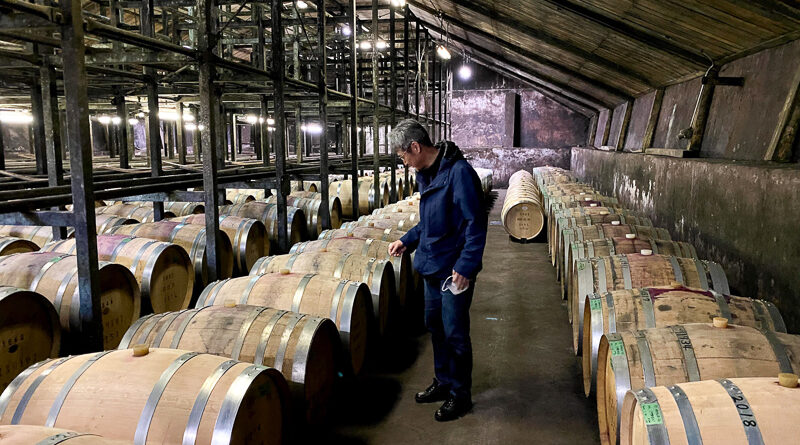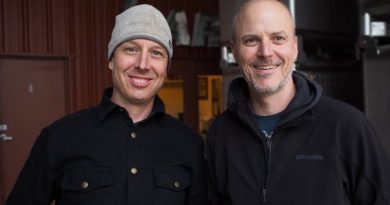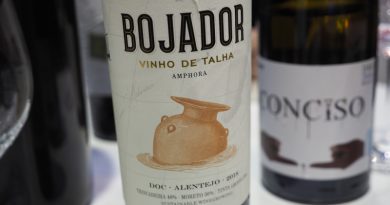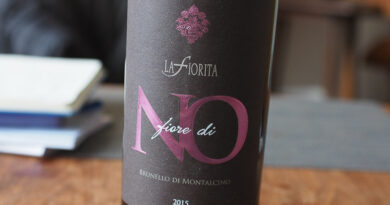In Nagano, Japan: Suntory Shiojiri Winery
Suntory is one of Japan’s leading drink companies, famous for their whiskies. But they also make wine. The company began life in 1899 when Torii Shinjiro opened a shop selling imported wines. They also began producing wine, and their Akadama Port Wine, which was to become a cornerstone of their production, was first made in 1907.
They opened their Shiojiri Winery in 1936, because there were a number of wine growers in the region. This had previously been a silkworm area, but the market had collapsed, and grapes seemed a promising alternative – the region doesn’t have enough rivers to support rice production. Also, many of the Japanese wines had been made from imported concentrate, and war with China stopped most of these imports, so suddenly domestically grown grapes were in high demand.
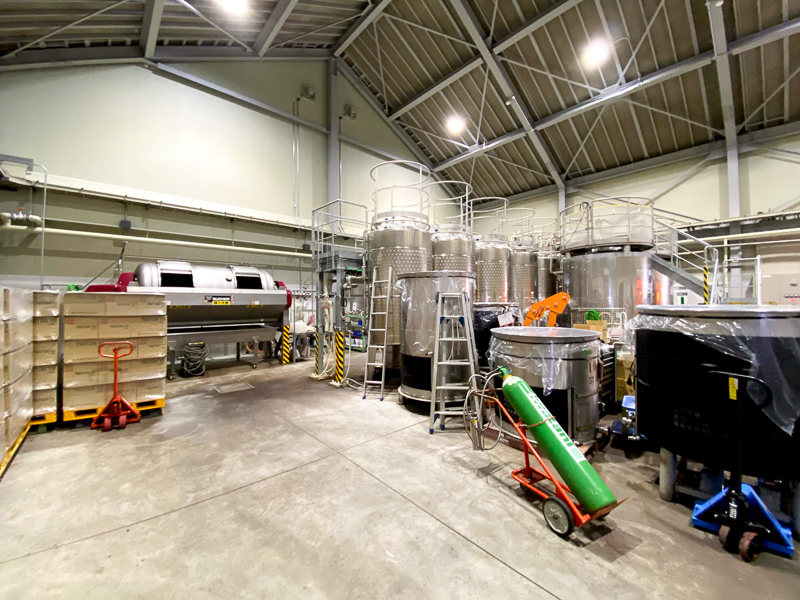
Suntory have three wineries. The mother winery is in Yamanashi, there’s the Shiojiri winery (this one), and there’s also a winery in Nigata. They make 5 million cases, of which just under a million bottles are from Japanese-grown grapes. We visited with winemaker Naoki Watanabe, who was trained in Bordeaux. Since 1983, Suntory have owned Château Lagrange in the Médoc, and are also partners in Beychevelle and Beaumont, as well as Robert Weil in the Rheingau.
Concord and Niagara used to be the dominant grapes here. In 1980, Suntory began planting Muscat Bailey A and Merlot to make dry still wines. Muscat Bailey A is an important variety for them. It’s a hybrid that was made in 1927 by Zenebi Kawakama, who is often referred to as the father of Japanese wine. He made 10 311 crosses, resulting in 22 varieties selected as quality wine grapes. As well as Muscat Bailey A, there’s Black Queen, Bailey Alicante A, Rose Ciotat and Red Millennium. Suntory began working with him in 1934.
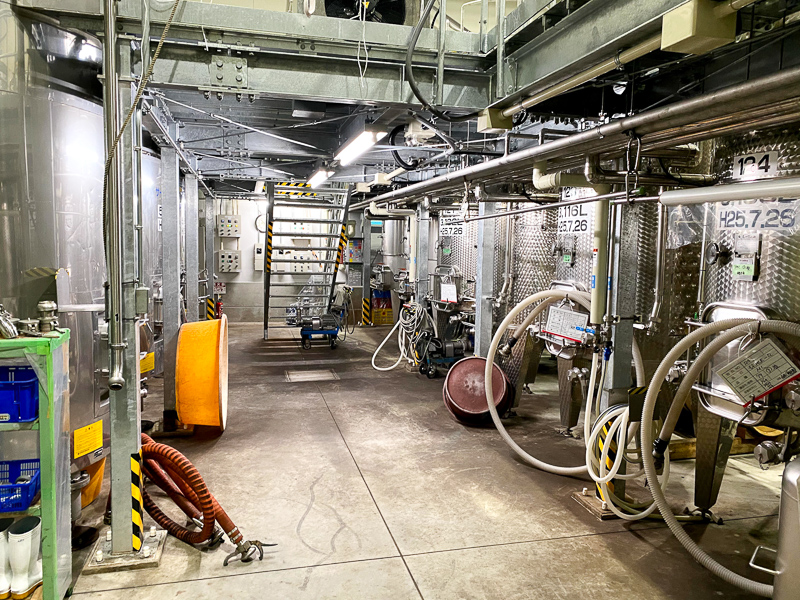
The winery as it is now was opened in 2013, with lots of small tanks for making the premium brands. For the Merlot, Watanabe sorts before and after destemming, and then crushes the grapes and ferments at 26-28 C with one delestage, then remontage with air until a gravity of 1050. The maceration is 2-3 weeks.
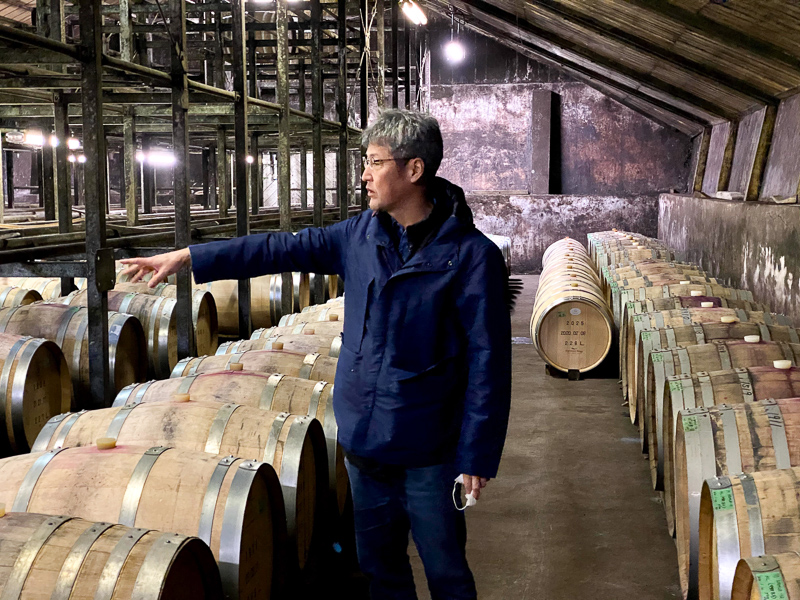
Fermentation with Muscat Bailey A is similar, but one-third whole bunch is used. Malolactic is in tank for both, and then they go to barrel. For the Merlot, there is 30% new oak, and all is French. Watanabe says he prefers Sylvain, Taransaud and Seguin Moreau as his coopers. The barrel cellar is the original 1937 construction.
It’s not easy to ripen the skins and seeds in this area, so every year they struggle to get the seeds ripe. In 2018 they got good maturity of the seeds, so it’s regarded as a good vintage for Merlot. ‘It’s not easy to get good maturity in Shioji,’ he says. ‘Every year it’s important to get there, and not just get maturity of skins but also seeds. We do a soft extraction. This is our idea to explain the terroir of Shioji. This changed from 2014. If we can get good grapes, we don’t need to extract too much.’
He wants to focus on expressing the land, making a harmonious wine. The first thing he should do is to get ripe fruit, and then he thinks it is important to express as the grape is. This has been the trend of Suntory for the last five years. ‘The first impression of the wine from Suntory might not be so strong,’ he says, ‘because rather than focusing on aroma, I’m focusing on terroir expression. Aroma can be achieved with winemaking, but that’s not my focus.’
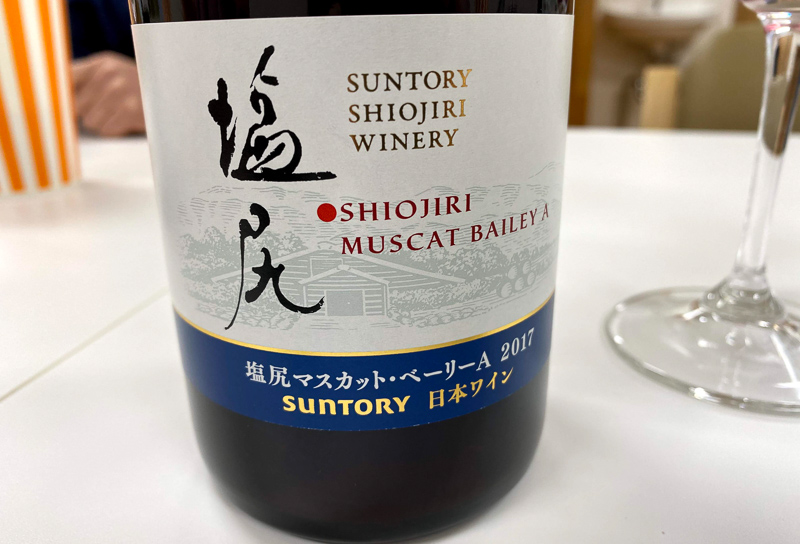
THE WINES
Suntory Shiojiri Winery Muscat Bailey A 2018 (cask sample)
Very dry summer followed by a wet September, and then a dry October. It was possible to do a late harvest at the end of October. One third whole bunch. This is vivid and intense with good concentration of fresh, juicy berry fruits. There’s some sour cherry but also some blackberry richness. Nicely complex and very expressive with a slight sappiness on the finish. 90/100
Suntory Shiojiri Winery Muscat Bailey A 2017
Normal summer, with some rain. Good conditions in September followed by a rainy October. Harvesting wasn’t too easy, but with sorting the results were good. Blending Iwaderehara and Kyogahara vineyards. There’s a slight smoky bacon edge to the nose with bright red fruits. The palate is bright with good acidity and sleek, fresh berry fruits, with some cherry brightness. There’s a sappiness, but overall this is all about fresh, slightly crunchy berry fruits. 89/100
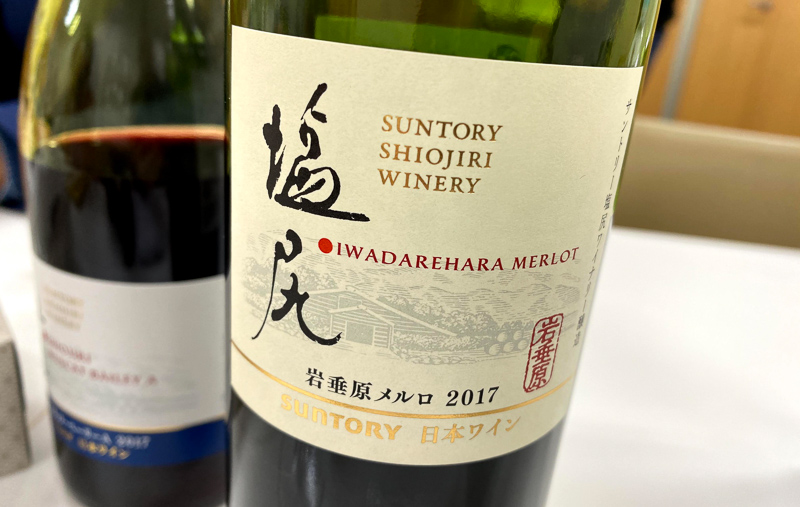
Suntory Shiojiri Winery Merlot 2018 (cask sample)
Pergola vines. Harvested just a little before the Muscat Bailey A at 22 Brix, so no chaptalization. 13% alcohol. This is very classy. There’s a lovely elegant gravelly edge to the blackcurrant and cherry fruit on the nose. The palate is fresh and elegant with a nice gravelly, green crunch as well as fleshy, supple berry and blackcurrant fruits. Great balance here with lovely fruit and good structure. 92/100
Suntory Shiojiri Winery Iwadarehara Merlot 2017
12% alcohol. 30% new French oak, 15 months. This is concentrated and quite stylish with an ashy, gravelly edge to the sweet blackcurrant and berry fruits. There’s some flesh here, with a bit of fruit sweetness, but also good structure from the well integrated tannins. Fresh, with good acidity, and a long blackcurranty finish. This is concentrated, quite classically styled, and really appealing. The oak integrates very well. 93/100
See also:
Nakadanaso and Gio Hills Winery
496 Winery, Cyclo Vineyard
A big Nagano wine tasting at Tomi Wine Chapel
Nagomi Vineyards
Les Vins Vivants

